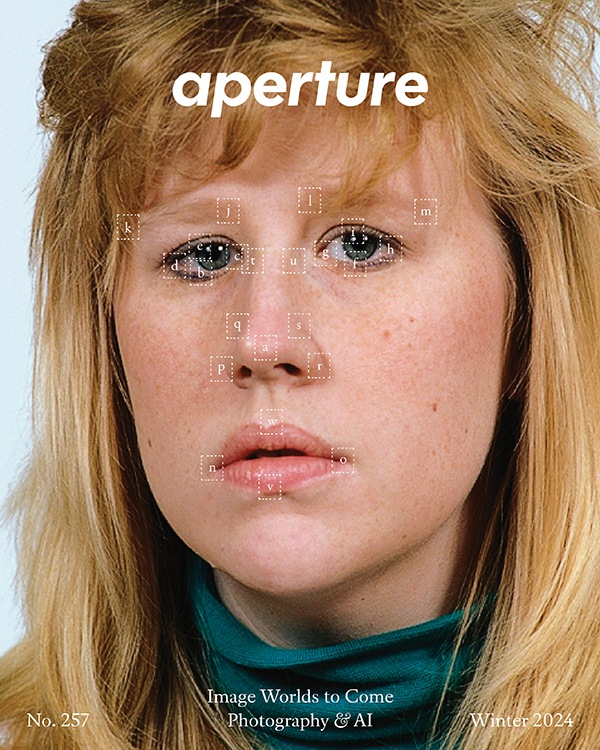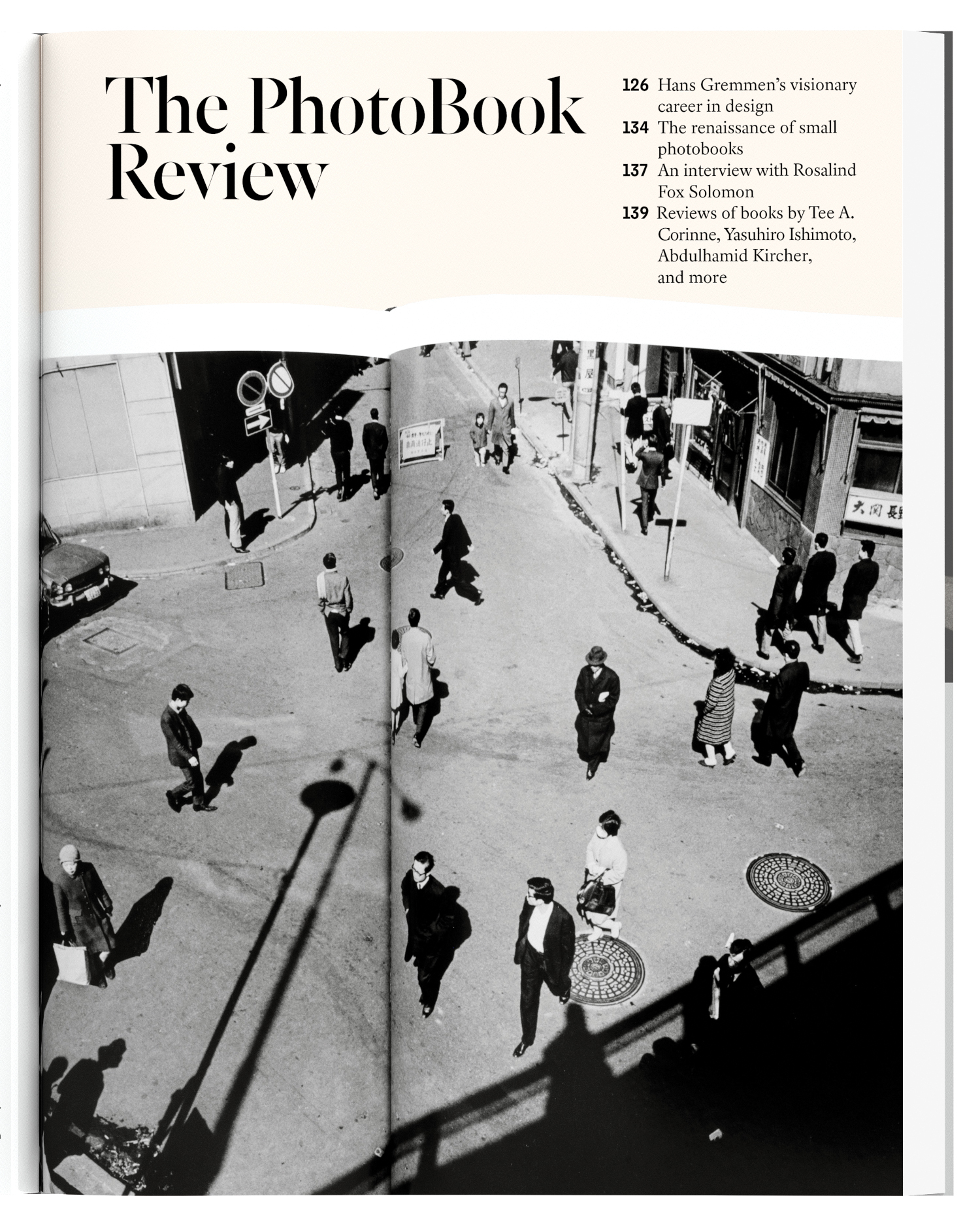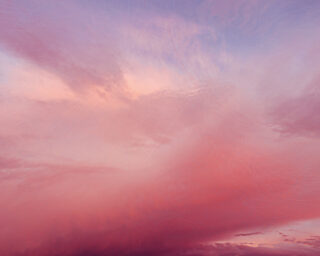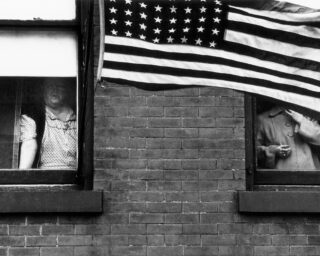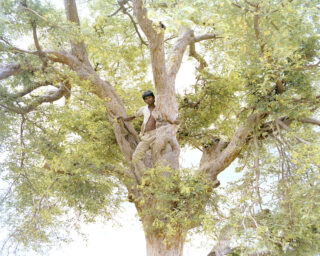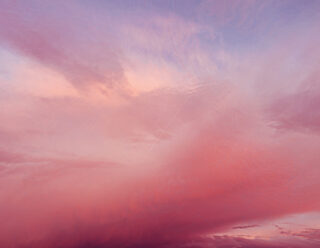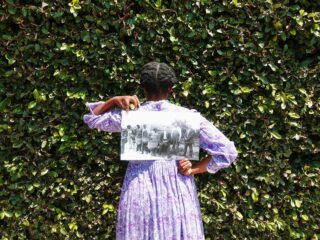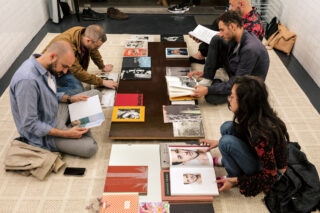Luigi Ghirri: Kodachrome
Luigi Ghirri’s photographs are once transporting and perplexing; his compositions appear casual—all just happenstance—and yet carefully balanced. He thrives on subtle elements of surprise, with a penchant for surreal motifs and disorienting frames. Thrilling as they can be disorienting, his color photographs live in the charged space between reality and representation. Kodachrome was Ghirri’s first book, self-published in 1978. Twenty-five photos from the series are on view at Matthew Marks Gallery until April 20, the first time they have been presented in the U.S. The Kodachrome photographs present views of Italian landscapes, tightly framed abstracted compositions, and highly textured frames within frames. Never without a sense of humor, they offer a glimpse of Ghirri’s early photographic sensibility.
When he published Kodachromes, Ghirri wrote a short exposé on his sources of inspiration, the notion of “deleted space,” and the things he is not interested in. That essay is reproduced below. It was included in Aperture’s 2008 volume It’s Beautiful Here, Isn’t It.
—Paula Kupfer
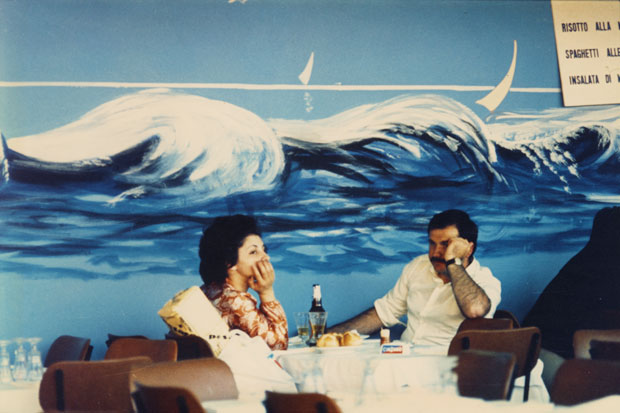
Luigi Ghirri, Bologna, 1973. © Estate of Luigi Ghirri, Courtesy Matthew Marks Gallery
Kodachrome: Introduction
I
In 1969 the newspapers published the photograph taken from the spaceship traveling to the moon. This was the first photograph of the entire Earth.
The image that man had pursued for centuries was presented for our view; it held within it all previous, incomplete images, all books that had been written, all signs, those that had been deciphered and those that had not. It was not only the image of the entire world, but the only image that contained all other images of the world: graffiti, frescoes, paintings, writings, photographs, books, films. It was at once the representation of the world and all representations of the world.
And yet this total vision, this re-description of everything, obviated the possibility of translating the total hieroglyph. The power of containing everything was annulled in the face of the impossibility of seeing everything all at once. The event and its representation, seeing and being contained, were presented—once again—to humanity as an insufficient response to the same old questions.
This possibility of total duplication, however, enabled us to glimpse the potential for deciphering the hieroglyph; we had the two poles of doubt and secular mystery: the image of the atom and the image of the world, finally looking at each other face to face. The space between the infinitely small and the infinitely large was filled by the infinitely complex: man and his life, nature.
The need for information or for knowledge emerges from these two extremes—fluctuating between the microscope and the telescope—to be able to translate and interpret reality or hieroglyph.

Luigi Ghirri, Paris, 1972. © Estate of Luigi Ghirri, Courtesy Matthew Marks Gallery
II
My work emerges from the desire and the need to interpret and translate the sense of this sum of hieroglyphs—not only the easily identifiable reality of the reality that has highly symbolic content, but also thoughts, memories, imagination, and fantastical or alienated content.
For my purposes, photography is extraordinarily important, because of its specific characteristics. In photography, the deletion of the space that surrounds the framed portion is as important for me as what is represented: it is thanks to this deletion that the image takes on meaning, becoming measurable. The image continues, of course, in the visible realm of the deleted space, inviting us to see the rest of reality that is not represented.
This double aspect of representing and deleting not only evokes the absence of limits, excluding every idea of completeness of finitude, but shows us something that cannot be delimited: reality itself.
The possibility of seeing and penetrating the universe of reality instead passes through all representations and cultural models that are known and given to us as defined and decisive. Our relationship with reality and life is that same relationship that exists between the satellite image and the actual earth.
Thus photography, with its indeterminacy, becomes a privileged subject it allows us to move away from the symbolic nature of defined representations, and we can attribute to it a value of truth. The possibility of analysis in time and space of the signs that form reality (the entirety of which has always been elusive) thus allows photography, with its fragmentary nature, to be closer to what also cannot be delimited: physical existence.
So I am not interested in images and “decisive moments,” the analysis of language in and of itself, aesthetics, the concept of all-consuming idea, the emotion of the poet, the culled quotation, the search for a new aesthetic creed, the use of a style.
My duty is to see with clarity, and this is why I am interested in all possible functions—without separating any of them out, but taking them on as a whole, in order to be able, from time to time, to see the hieroglyphs I have encountered and make them recognizable.

Luigi Ghirri, Chartres, 1977. © Estate of Luigi Ghirri, Courtesy Matthew Marks Gallery
III
The daily encounter with reality, the fictions, the surrogates, the ambiguous, poetic, or alienating aspects, all seem to preclude any way out of the labyrinth, the walls of which are ever more illusory… to the point at which we might merge with them.
The meaning that I am trying to render through my work is a verification of how it is still possible to desire and face a path of knowledge, to be able finally to distinguish the precise identity of man, things, life, from the image of man, things, and life.
—1978
Text © Estate of Luigi Ghirri; images © Estate of Luigi Ghirri and courtesy Matthew Marks Gallery, New York.
